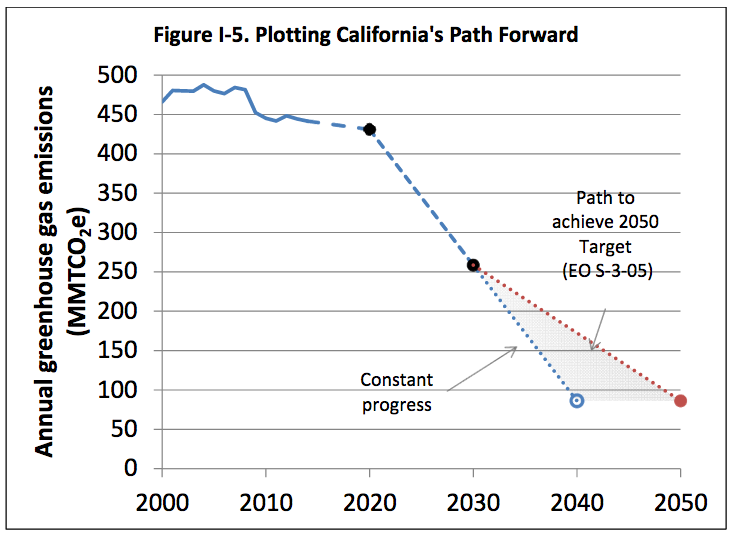The California Air Resources Board released a draft plan for getting California to achieve its ambitious greenhouse gas reduction targets set out by S.B. 32, which passed in September. The 2030 target is to reduce emissions by forty percent below 1990 levels. The draft plan updates and extends previous scoping plans that created the state's cap-and-trade program as well as other regulatory measures to reduce emissions from a wide spectrum of industries in the state.
Air Resources Board Chair Mary Nichols stated:
This draft plan builds on California’s decade-long success in transforming the state’s economy. It sets in place a public process to develop the policies that will create continued opportunities for innovation and investment, benefit disadvantaged communities and ensure California continues to lead the fight against the global threat of climate change.
In a press statement, Governor Jerry Brown called the California targets “the most ambitious in North America.” “This plan lays out a road map for California – and the rest of the world – to achieve climate goals that were inconceivable only a decade ago,” he said. “There are steep hills ahead, but we'll scale them by continuing to take a series of bold actions, including extending California’s cap-and-trade program.”
Cap-and-trade is not directly required by S.B. 32, which does nothing more than set emission reduction targets. But continuing the cap-and-trade program seems to be a mission for the governor. The draft plan includes analyses of two alternative strategies—one that would rely on direct regulation of emissions and one that would apply a carbon tax instead of using cap-and-trade—but the analyses show them coming up short in terms of meeting emissions targets.
The alternatives were analyzed in part in response to feedback ARB heard at more than eighteen workshops and community meetings held throughout the state. ARB was also responding to concerns expressed by members of its Environmental Justice Advisory Committee, which pushed the state to reconsider cap-and-trade in light of recent findings that it may not be helping reduce emissions where most needed.
The draft plan discusses the need for a wide range of emission reduction strategies, including for zero- and near-zero emission vehicle technologies, renewable energy, low-carbon fuels, and integrating land use and transportation planning.
A public workshop will be held in Sacramento to discuss the draft plan, and another update is planned for a January release that will include more detailed economic and environmental analyses and a comparison of the greenhouse gas and pollution emission reductions expected from each proposed measure. The plan should be finalized in Spring 2017.
The December 16 meeting is open to the public, and will be held from 1:30 to 4:30 pm at the California Environmental Protection Agency at 1001 I Street, Sacramento. A live webcast can be followed here, and workshop materials can be found here.
The 2030 Target Scoping Plan Discussion Draft is available here.






